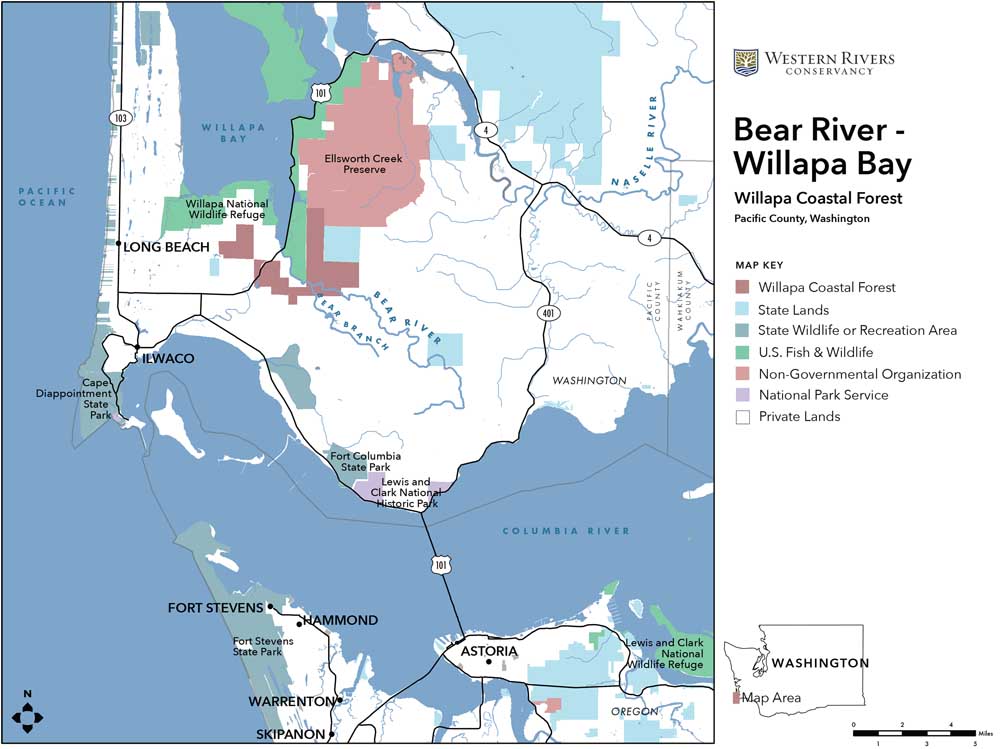Editor’s Notebook: The bay’s beating heart gets even better
Published 10:09 am Monday, March 25, 2024

- A map shows the current boundaries of Willapa National Wildlife Refuge and related conservation areas.
A couple decades ago, creation of Lewis and Clark National Historical Park on both sides of the Columbia River signaled that this is one of America’s places of prime importance. And although the National Park Service has been slow to develop active interpretation of its sites in Washington, there’s no doubt that preserving them for posterity is a fundamental “good” — something worth doing for many excellent reasons.
Trending
In more subtle ways, ongoing additions to Willapa National Wildlife Refuge are equally consequential. In news coverage so far, we’ve only scratched the surface of what is being added to the refuge, and what the expansion will mean. We’ll explore it all more fully over the next couple years.
Looking at a map of the refuge and other conserved lands, it’s easy to picture them as our area’s beating heart — an organic machine pumping health throughout our surroundings.
Concentrated around the south end of the bay, refuge lands came to 14,000 acres 20 years ago and 17,000 a decade ago. If I count correctly, recent additions and others soon to come from willing private sellers will add nearly 5,300 more acres, bringing the total to almost 35 square miles of tidelands, temperate rainforest, ocean beaches and small streams.
Together with adjoining or nearby property protected by the Nature Conservancy in Washington and by the state, there will be close to 50 almost-contiguous square miles of amazing wildlife habitat set aside in the south bay.
Recalling radical claims 30 years ago that there was some vague — and unfounded — conspiracy to turn the whole county into a national park, it’s worth considering that the expanded refuge will come to less than 3% of the county’s total area. In a place where the vast majority of land is operated as industrial tree farms — a legacy of corrupt 19th century land grabs — it’s remarkable and laudable that even this much will now be safeguarded.
While it won’t serve obvious economic purposes by being clear cut or carved up and filled for residential construction, it’s worth highlighting the ways in which local refuge lands add to our well being.
For me personally, they are a key to physical and emotional health, providing dozens of places to walk and observe the astounding living world of this still-untamed corner of the Pacific Northwest. Especially now in these first weeks of spring, the woods and wetlands are coming alive with the plucky lovesick ballads of emerald green tree frogs, the little lucky charms of newly sprouted shamrocks, a smelly riot of skunk cabbages and the almost magical three-part symmetry of trillium.
In the refuge we can see, touch, hear and smell the incredibly complex workings of nature humming along as it should. Sloughs alternately drain the marshes and refill them with salt water. Putting the months of clean rain to good use and now sensing the warming, lengthening days ahead, hundreds of species are budding out, flowering and getting set to grow. You can almost sense the sap rising in the hemlocks and salmonberries. Birds — the refuge’s official VIPs — are everywhere, most visibly in mated pairs of geese in the midst of making a new generation.
If, as some experts believe, “Water is the oil of the 21st century,” we bathe in untold wealth. There will soon come a time when we all fully appreciate inhabiting a place where so much cold, fresh water oozes from the sky in every season and gushes down any wrinkle in the land. Looking at a map of the refuge and other conserved lands, it’s easy to picture them as our area’s beating heart — an organic machine pumping health throughout our surroundings.
Elected officials, groups including the Western Rivers Conservancy, and local citizens — most notably the members of the nonprofit Friends of the Willapa National Wildlife Refuge — deserve our lasting thanks for the foresight shown in setting this jewel aside for enjoyment, fulfillment and functionality. Particularly deserving of being singled out for credit are a series of smart and well-engaged refuge managers including Jim Hidy, Charlie Stenvall and current leader Jackie Ferrier.
As I recently described to a Seattle Times reporter, you might see more people walking around his city’s small Green Lake Park in an hour than you will see in a year exploring the Willapa refuge. I’d certainly like for it to stay that way, but I’d also like more local people to join me in being avid fans of this splendid natural gem in our midst. Take your time and be restored.









